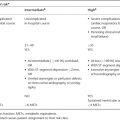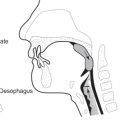Introduction
Geriatric patients are frequently prescribed multiple drugs in complex dosage schedules. In some instances, this is justified because of the presence of multiple chronic medical conditions, the proven efficacy of an increasing number of drugs for these conditions and practice guidelines that recommend their use. In many instances, however, complex drug regimens are unnecessary; they are costly and predispose to non-compliance and adverse drug reactions. Many older patients are prescribed multiple medications, take over-the-counter drugs and are then prescribed additional drugs to treat the side effects of medications they are already taking. Taking over-the-counter drugs, such as vitamins, often leads to non-compliance with therapeutically appropriate drugs.
Although persons aged 65 years and older comprise only about 12% of the US population, they consume one-third of all prescribed drugs and more than half of over-the-counter medicines. Overall, more than 80% of all community-dwelling elders use prescription drugs, with the average older person using between three and eight drugs and 70% of nursing home residents in the USA are receiving more than nine drugs.1 The devastating consequences of medical errors have been clearly detailed in the book To Err is Human by the Institute of Medicine. Medical errors are not uncommon, leading to a number of deaths ranging between 44 000 to 98 000 at a cost of $17–29 billion per year. A Harvard study done in 51 New York hospitals involving 30 000 patients reported that 3.7% had a treatment adverse event and there was a doubling in the number of undesirable treatment effects in persons over 65 years of age. Most errors are preventable; errors of omission are as important as errors of commission.2
In addition to concerns about the risks of excessive and inappropriate drug prescribing, there are also concerns about the consequences of underprescribing potentially beneficial drugs. With the increasing numbers of patients surviving to older ages and comprising such a large proportion of drug use, a clear understanding of the risks, benefits and consequences of drug therapy in older patients is needed.
Pharmacokinetics
Pharmacokinetics (the study of the action of a drug in the body over time) changes with age. The physiological changes that accompany ageing alter the pharmacological processes of absorption, distribution, metabolism and elimination. The effects of these age-related changes are variable and difficult to predict. Some of these physiological changes are related solely to ageing, whereas others are most likely caused by the combined effect of age, disease and the environment. Even though increasing age is often accompanied by reductions in the physiological reserve of many organ systems, independent of the effects of disease, these changes are not uniform; substantial variability exists from individual to individual, which makes some older patients more vulnerable than others.
Of the four traditional components of pharmacokinetics—absorption, distribution, metabolism and excretion—only the last three are meaningfully affected by age. In the absence of malabsorptive syndromes, traditional oral formulation of drugs are absorbed as well in old age as in youth; indeed, the well-reported changes in gastric motility and blood flow to the gut with ageing do not appear to alter the efficiency with which medications move (mainly by passive diffusion) from the gastrointestinal tract into the systemic circulation. More important changes occur from the concurrent administration of several medications at the same time. However, some drugs commonly used for older persons require food for optimum absorption, for example, megestrol acetate which is used to stimulate appetite and weight gain has minimal absorption without food (Table 13.1).
Table 13.1 Relevant changes in ageing and pharmacology.
| Pharmacological parameter | Age-related changes | Clinical effect |
| Tissue sensitivity | Alterations in: Receptor number and affinity Nuclear responses Second messenger function | Patients are more sensitive or less sensitive to a given medication |
| Absorption | Decrease in: Splanchnic blood flow Absorptive surface gastrointestinal motility Increased gastric pH | Minimal changes associated with ageing |
| Distribution | Decrease in: Total body water Serum albumin Lean body mass Increased fat | Higher concentration of drugs Longer elimination half-life of lipid-soluble drugs |
| Metabolism | Decreased liver blood flow and enzyme activity | Decreased biotransformation and first-pass metabolism |
| Excretion | Decreased renal perfusion, glomerular filtration rate and tubular secretion | Decreased renal elimination of drugs |
Unlike absorption, drug distribution is affected by age in clinically meaningful ways. Serum albumin, the major drug-binding protein, declines in sick patients due to cytokine excess. Even in healthy patients where there is a small decline, this can substantially increase the amount of free drugs available for action. This effect is of particular relevance for highly protein-bound drugs, especially when they are used simultaneously and compete for protein-binding sites. In long-term care residents, diphenylhydantoin toxicity with low serum levels can occur because the decrease in albumin. Hence measurement of a free dilantin level can be essential in these situations.
The relative increase in body fat and decrease in lean body mass alter drug distribution, such that fat-soluble drugs distribute more widely and water-soluble drugs less widely; this fact can potentially lead the healthcare professional to the wrong decision due to misinterpretation of serum drug levels. Many assays measure the total amount of drug that is present in serum, both protein-bound and unbound (free). The unbound concentration is more clinically relevant than the total concentration because only unbound drug is pharmacologically active.3 For a patient with hypoalbuminaemia or another deficiency in binding protein, any given serum drug level reflects a greater concentration of unbound drug than the same level would signify in a patient with normal protein-binding capacity. A hypoalbuminaemic patient with a normal total serum drug concentration may actually have an unbound drug concentration that is unacceptably high. By contrast, the same patient with a slightly lower than normal total serum concentration may have an unbound drug concentration that is in reasonable range3 (Table 13.2).
Table 13.2 Volume of distribution for commonly used medicationsa.
| Decreased volume | Increased volume |
| Ethanol | Diazepam |
| Gentamicin | Oxazepam |
| Digoxin | Prazocin |
| Cimetidine | Acetaminophen |
| Phenytoin | Salicylates |
| Quinine | Tolbutamide |
| Theophylline | Chlordiazepoxide |
| Meperidine |
aIf the volume of distribution is higher, drug levels are higher.
In evaluating serum drug levels in the older patient, it is also important to recall that the therapeutic range routinely reported in such assays may not be an accurate guide to either efficacy or toxicity in the geriatric patient. Such ranges have typically been defined in non-elderly subjects and cannot take into account pharmacodynamic differences or idiosyncratic aspects of specific agents.4
The other important aspect is the drug distribution, which varies considerably with age; the volume of distribution (Vd) is a virtual space in a given patient which a particular drug occupies. Age-related changes in body composition can greatly affect pharmacology by altering Vd; the elimination half-life of a drug varies with the Vd:drug clearance ratio. Thus, even if the same rate of clearance of a drug is unchanged with age, changes in Vd can affect a drug’s half-life and duration of action.
Because the total body water and lean body mass decline with increasing age, drugs that distribute in these compartments, such as antibiotics, digoxin, lithium and alcohol, may have a lower Vd and can, therefore, achieve higher concentrations from given amounts of drugs. On the other hand, drugs that distribute in body fat, such as many of the psychotropic agents, have a high Vd in geriatric patients. The larger Vd will thus cause a prolongation of the half- life unless the clearance increases proportionately, which is unlikely to happen with age.4
As an example of the necessary precautions that need to be implemented in elderly patients, warfarin is an excellent candidate because it has been used more often in older persons. Warfarin inhibits the four vitamin K-dependent coagulant proteins, factors II, VII, IX and X, and it is highly protein-bound (97–99%), which could be a problem in malnourished patients, metabolized in the liver and, with a half-life of 42 h, its onset of action is ∼36–72 h, with a peak effect within 5–7 days.
Warfarin has been proven to be effective in prophylactic or therapeutic anticoagulation, but the risk of major bleeding with increasing levels of prothrombin time/international normalized ratio (PT/INR) is a major concern; it is increased by the presence of comorbid conditions such as heart failure, liver or kidney failure or cancer. The warfarin dose should be highly individualized and may have to be adjusted several times, based on laboratory test results depending on the target INR for the patient’s condition; strict adherence to the prescribed dosage schedule is necessary and patients should be informed not to take or discontinue any other medications, except on the advice of a physician or pharmacist. Checking the pharmacogenomics5 for all patients when initiating warfarin is recommended. An excellent algorithm for initiating warfarin treatment can be found at www.warfarindosing.org.
In elderly patients, initial doses of warfarin typically are lower and INR monitoring should be performed more frequently and because warfarin possesses numerous drug interactions, some of which increase the effects of warfarin and others that decrease its effects, caution must be observed when any drug, herbal, nutritional supplement or dietary changes are made to existing regimen of a patient receiving warfarin.
Metabolism and Drug Clearance
The liver represents the major site of metabolism for many medications. Hepatic transformations of drugs are categorized into phase I (preparative) and phase II (synthetic) reactions. Phase I reactions include oxidations (hydroxylation, N-dealkylation and sulfoxidation), reductions and hydrolyses. Phase II reactions involve conjugation of the drug molecule to glucuronides, sulfates or acetates. There is evidence of decline in phase I reactions with increasing age and that the decline is more prominent in men than in women. In contrast, the second phase of drug metabolism appears to be less affected by age. There is also evidence that the ability of environmental factors (most importantly smoking) to induce drug-metabolizing enzymes declines with age.6
Significant age-related declines in liver size and in liver blood flow have been described; in terms of absolute hepatic blood flow, reductions of 25–47% have been reported in persons between the ages of 25 and 90 years. This decrease is clinically important because hepatic metabolism is the rate-limiting step that determines the clearance of most metabolized drugs. This effect is especially relevant for drugs that undergo rapid hepatic metabolism (e.g. propranolol). Also, drugs that undergo extensive first-pass metabolism are likely to reach higher blood levels if hepatic blood flow is decreased.
The cytochrome P450 (CYP) system, located in the smooth endoplasmic reticulum of hepatocytes, is the main catalyst of phase I reactions. Many isoforms of CYP exist, the most important being CYP3A4, ∼60% of CYP enzymes are found in the liver and the remainder are found in the intestine, kidney and brain. Many commonly prescribed medications serve as substrates for these enzyme systems. Phase 1 metabolism often undergoes a substantial decrease in activity in elderly patients as a result of illness or drug interactions; drugs that are metabolized through phase I enzymatic activity will have prolonged half-lives, but there is no easy way to predict the effects of changes in phase I metabolism in an individual patient or to adjust maintenance doses of drugs that undergo this form of metabolism6
Stay updated, free articles. Join our Telegram channel

Full access? Get Clinical Tree








